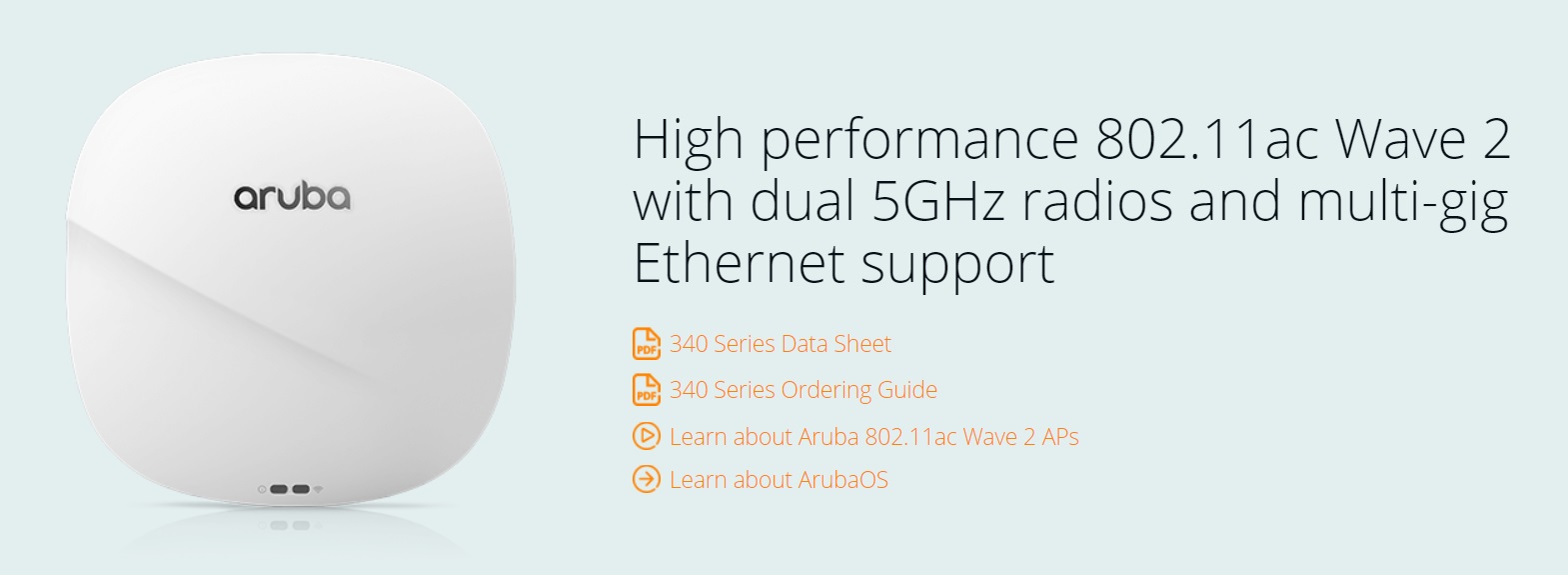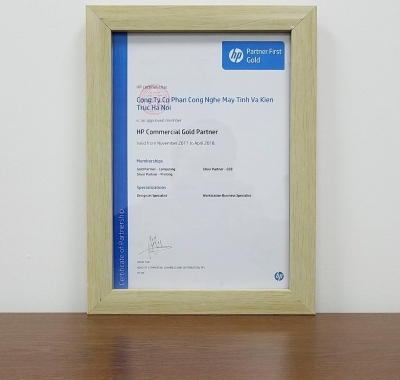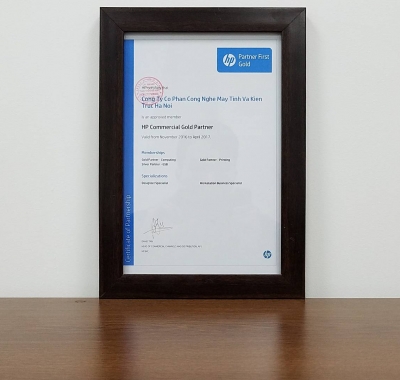Aruba 340 Series
The Aruba 340 series access points provide the fastest 802.11ac gigabit data speeds and superb user experience for mobile devices and applications in a digital workplace. Designed with an integrated, 802.3bz compliant, HPE SmartRate multi-gig Ethernet port to eliminate wired bottlenecks, these APs offer unmatched wireless performance and capacity. The unique and flexible dual-5GHz architecture of the 340 series offers a way to boost 5GHz capacity where needed.

-
-
UNIQUE BENEFITS - Unified AP – deploy with or without controller
- The 340 Series APs can be deployed in either controller- based (ArubaOS) or controllerless (InstantOS) deployment mode
- Dual Radio 4x4 802.11ac access point with Multi-User MIMO (wave 2)
- Supports up to 2,166 Mbps per radio in the 5 GHz band (with 4SS/VHT80 or 2SS/VHT160 clients) and up to 800 Mbps in the 2.4 GHz band (with 4SS/VHT40 clients)
- Antenna polarization diversity (fixed) for optimized RF performance
- Optional dual-5 GHz mode supported, where the 2.4 GHz radio is converted to a second 5 GHz radio
- Both 5 GHz radios providing full coverage, doubling the performance and capacity
- Unlike competitive solutions, the 340 Series is designed to isolate the two 5 GHz transmitters for higher performance
- Conversion can be manual/fixed, or automatic and dynamic (software controlled, under-the hood), based on system-wide capacity and load in both bands
- HPE SmartRate uplink Ethernet port (E0)
- Supports up to 2.5 Gbps with NBase-T and IEEE 802.3bz Ethernet compatibility
- Backwards compatible with 100/1000Base-T
- Hitless PoE failover between both Ethernet ports
- Built-in Bluetooth Low-Energy (BLE) radio
- Enables location-based services with BLE-enabled mobile devices receiving signals from multiple Aruba Beacons at the same time
- Enables asset tracking when used with Aruba Asset Tags
- Advanced Cellular Coexistence (ACC)
- Minimizes interference from 3G/4G cellular networks, distributed antenna systems and commercial small cell/femtocell equipment
- Quality of service for unified communications applications
- Supports priority handling and policy enforcement for unified communication apps, including Skype for Business with encrypted videoconferencing, voice, chat and desktop sharing
- Aruba AppRF technology leverages deep packet inspection to classify and block, prioritize or limit bandwidth for over 1,500 enterprise apps or groups of apps
- Best-in-class RF Management
- Integrated AirMatch technology manages the 2.4-GHz and 5-GHz radio bands and actively optimizes the RF environment including channel width, channel selection and transmit power
- Adaptive Radio Management (ARM) technology provides airtime fairness and ensures that APs stay clear of all sources of RF interference to deliver reliable, high- performance WLANs
- Spectrum analysis
- Capable of part-time or dedicated air monitoring, the spectrum analyzer remotely scans the 2.4 GHz and 5 GHz radio bands to identify sources of RF interference from HT20 through VHT160 operation
- Aruba Secure Core
- Device assurance: Use of Trusted Platform Module (TPM) for secure storage of credentials and keys as well as secure boot
- Integrated wireless intrusion protection1sup> offers threat protection and mitigation, and eliminates the need for separate RF sensors and security appliances
- IP reputation and security services identify, classify, and block malicious files, URLs and IPs, providing comprehensive protection against advanced online threats
- SecureJack-capable for secure tunneling of wired Ethernet traffic
- Intelligent Power Monitoring (IPM)
- Enables the AP to continuously monitor and report its actual power consumption and optionally make autonomous decisions to disable certain capabilities based on the amount of power available to the unit
- Software configurable to disable capabilities in certain orders. For the 340 Series Access Points, by default, the USB interface will be the first feature to turn off if the AP power consumption exceeds the available power budget
CHOOSE YOUR OPERATING MODE - The Aruba 340 Series APs offer a choice of deployment and operating modes to meet your unique management and deployment requirements:
- The 340 Series AP is a unified AP that supports both controller-based and controller-less deployment modes, providing maximum flexibility.
- Controller-based mode – When deployed in conjunction with an Aruba Mobility Controller, Aruba 340 Series APs offer centralized configuration, data encryption, policy enforcement and network services, as well as distributed and centralized traffic forwarding.
- Controller-less (Instant) mode – The controller function is virtualized in a cluster of APs in Instant mode. As the network grows and/or requirements change, Instant deployments can easily migrate to controller-based mode.
- Remote AP (RAP) mode for branch deployments
- Air monitor (AM)1 for wireless IDS, rogue detection and containment
- Spectrum analyzer (SA)1, dedicated or hybrid, for identifying sources of RF interference
- Secure enterprise mesh portal or point
For large installations across multiple sites, the Aruba Activate service significantly reduces deployment time by automating device provisioning, firmware upgrades, and inventory management. With Aruba Activate, the Instant APs are factory-shipped to any site and configure themselves when powered up.
ARUBA 340 SERIES SPECIFICATIONS - AP-344: External antenna models
- AP-345: Internal antenna models
WI-FI RADIO SPECIFICATIONS - AP type: Indoor, dual radio, 5 GHz 802.11ac 4x4 MIMO and 2.4 GHz 802.11n 4x4 MIMO
- The 2.4 GHz radio supports all 802.11ac rates as well (proprietary extension)
- Software-configurable dual radio supports:
- Dual-radio mode: 5 GHz (Radio 0) and 2.4 GHz (Radio 1)
- Dual-5 GHz mode: upper 5 GHz (Radio 0) and lower 5 GHz (Radio 1)
- 5 GHz:
- Four spatial stream Single User (SU) MIMO for up to 1,733 Mbps wireless data rate to individual 4SS VHT80 or 2SS VHT160 client devices
- Four spatial stream Multi User (MU) MIMO for up to 1,733 Mbps wireless data rate to up to four 1SS or two 2SS MU-MIMO capable client devices simultaneously
- Peak datarate increases to 2,166 Mbps when using 1024-QAM modulation (proprietary extension)
- 2.4 GHz:
- Four spatial stream Single User (SU) MIMO for up to 600 Mbps wireless data rate to individual 4SS HT40 client devices, and up to 800 Mbps to individual 4SS VHT40 devices (proprietary extension)
- Support for up to 256 associated client devices per radio, and up to 16 BSSIDs per radio
- Supported frequency bands (country-specific restrictions apply):
- 2.400 to 2.4835 GHz
- 5.150 to 5.250 GHz2
- 5.250 to 5.350 GHz2
- 5.470 to 5.725 GHz3
- 5.725 to 5.850 GHz3
- Available channels: Dependent on configured regulatory domain
- Dynamic frequency selection (DFS) optimizes the use of available RF spectrum
- Supported radio technologies:
- 802.11b: Direct-sequence spread-spectrum (DSSS)
- 802.11a/g/n/ac: Orthogonal frequency-division multiplexing (OFDM)
- Supported modulation types:
- 802.11b: BPSK, QPSK, CCK
- 802.11a/g/n/ac: BPSK, QPSK, 16-QAM, 64-QAM, 256-QAM, 1024-QAM (proprietary extension)
- Transmit power: Configurable in increments of 0.5 dBm
- Maximum (aggregate, conducted total) transmit power (limited by local regulatory requirements):
- 2.4 GHz band: +24 dBm (18dBm per chain)4
- 5 GHz band: +24 dBm (18 dBm per chain)4
- Note: Conducted transmit power levels exclude antenna gain. For total (EIRP) transmit power, add antenna gain.
- Advanced Cellular Coexistence (ACC) minimizes the impact of interference from cellular networks
- Maximum ratio combining (MRC) for improved receiver performance
- Cyclic delay/shift diversity (CDD/CSD) for improved downlink RF performance
- Short guard interval for 20 MHz, 40 MHz, 80 MHz and 160 MHz channels
- Space-time block coding (STBC) for increased range and improved reception
- Low-density parity check (LDPC) for high-efficiency error correction and increased throughput
- Transmit beam-forming (TxBF) for increased signal reliability and range
- Supported data rates (Mbps):
- 802.11b: 1, 2, 5.5, 11
- 802.11a/g: 6, 9, 12, 18, 24, 36, 48, 54
- 802.11n: 6.5 to 600 (MCS0 to MCS31)
- 802.11ac: 6.5 to 1,733 (MCS0 to MCS9, NSS = 1 to 4 for VHT20/40/80, NSS = 1 to 2 for VHT160)
- 802.11ac: 1,950 and 2,166 (MCS10 and MCS11, NSS = 1 to 4 for VHT20/40/80, NSS = 1 to 2 for VHT160)5
- 802.11n high-throughput (HT) support: HT20/40
- 802.11ac very high throughput (VHT) support: VHT20/40/80/160
- 802.11n/ac packet aggregation: A-MPDU, A-MSDU
1 Not supported in dual-5 GHz mode
2 Not supported on radio 0 in dual-5 GHz mode
3 Not supported on radio 1 in dual-5 GHz mode
4 Reduced by 2 dB in dual-5 GHz mode
5 Proprietary extension; shown rates shown are for the highest NSS only; additional rates for lower NSS values are supported as well. - Unified AP – deploy with or without controller
-
WI-FI ANTENNAS - AP-344: External antenna models. Two sets of four RP-SMA antenna connectors:
- Primary: A0 – A3, connected to chains 0 through 3 respectively on each associated radio
- With AP in dual-radio mode: dual-band interfaces, diplexing signals to/from radio 0 (full 5 GHz) and radio 1 (2.4 GHz)
- With AP in dual-5 GHz mode: 5 GHz interfaces from radio 0 (upper 5 GHz)
- Secondary: B0 – B3, connected to chains 0 through 3 respectively
- With AP in dual-radio mode: not used
- With AP in dual-5 GHz mode: 5 GHz interfaces from radio 1 (lower 5 GHz)
- Total internal losses between radio and external connectors:
- With AP in dual-radio mode: 2.0 dB for 5 GHz, 2.0 dB for 2.4 GHz
- With AP in dual-5 GHz mode: 2.0 dB for upper 5 GHz, 1.7 dB for lower 5 GHz
- Primary: A0 – A3, connected to chains 0 through 3 respectively on each associated radio
- AP-345: Internal antenna models. A total of eight internal omni-directional downtilt antennas
- Radio 1: four cross-polarized dual-band downtilt omni-directional antennas for 4x4 MIMO with peak antenna gain of 5.8 dBi (2.4 GHz) and 5.6 dBi (5 GHz) per antenna.
- With AP in dual-radio mode: used for 2.4 GHz only
- With AP in dual-5 GHz mode: used for lower 5 GHz only
- Radio 0: four cross-polarized 5 GHz downtilt omni- directional antennas for 4x4 MIMO with peak antenna gain of 5.5 dBi per antenna
- With AP in dual-radio mode: used for full 5 GHz only
- With AP in dual-5 GHz mode: used for upper 5 GHz only
- All internal antennas are optimized for horizontal ceiling mounted orientation of the AP. The downtilt angle for maximum gain is roughly 30 degrees.
- Combining the patterns of all antennas per radio, the peak gain of the average (effective) pattern is:
- Radio 1: 3.1 dBi in 2.4 GHz and 2.7 dBi in 5 GHz.
- Radio 0: 2.2 dBi in 5 GHz.
- Radio 1: four cross-polarized dual-band downtilt omni-directional antennas for 4x4 MIMO with peak antenna gain of 5.8 dBi (2.4 GHz) and 5.6 dBi (5 GHz) per antenna.
OTHER INTERFACES - One HPE Smart Rate port (RJ-45, maximum negotiated speed 2.5 Gbps)
- Auto-sensing link speed (100/1000/2500BASE-T) and MDI/MDX
- 2.5 Gbps speed complies with NBase-T and 802.3bz specifications
- PoE-PD: 48Vdc (nominal) 802.3at PoE
- One 10/100/1000BASE-T Ethernet network interface (RJ-45)
- Auto-sensing link speed and MDI/MDX
- PoE-PD: 48Vdc (nominal) 802.3at PoE
- Link aggregation (LACP) support between both network ports for redundancy and increased capacity
- DC power interface, accepts 1.35/3.5-mm center-positive circular plug with 9.5-mm length
- USB 2.0 host interface (Type A connector)
- Bluetooth Low Energy (BLE) radio
- Up to 4 dBm transmit power (class 2) and -91 dBm receive sensitivity
- Integrated vertically polarized omnidirectional antenna with roughly 30 degrees downtilt and peak gain of 4.9 dBi (AP-345) or 3.1 dBi (AP-344)
- Visual indicators (tri-color LEDs): for System and Radio status
- Reset button: factory reset, LED mode control (normal/off)
- Serial console interface (proprietary, μUSB physical jack)
- Kensington security slot
POWER SOURCES AND CONSUMPTION - The AP supports direct DC power and Power over Ethernet (PoE)
- When both power sources are available, DC power takes priority over PoE
- Power sources are sold separately
- Direct DC source: 48Vdc nominal, +/- 5%
- Power over Ethernet (PoE): 48Vdc (nominal) 802.3af/802.3at compliant source
- When powered by a direct DC power source, the AP will operate without restrictions
- When powered by PoE and with the IPM feature enabled, the AP will start up in unrestricted mode, but it may apply restrictions depending on the PoE budget and actual power. What IPM restrictions to apply, and in what order, is programmable.
- When powered by PoE with the IPM feature disabled, the AP will apply some fixed restrictions:
- The USB interface is disabled when using an 802.3at PoE power source
- The USB interface and second Ethernet port (E1 if E0 is used, otherwise E0) are disabled, and both radios are restricted to 2x2 operation (AP in dual-radio mode) or 1x1 operation (AP in dual-5 GHz mode) when using an 802.3af PoE power source
- Maximum (worst-case) power consumption:
- DC powered: 20.0W (AP in dual-radio mode), 22.8W (AP in dual-5 GHz mode)
- PoE powered (802.3at): 21.9W (AP in dual-radio mode), 25.1W (AP in dual-5 GHz mode)
- PoE powered (802.3af): 13.5W
- All numbers above are without an external USB device connected. When sourcing the full 5W power budget to such a device, the incremental (worst-case) power consumption for the AP is up to 6W (DC) or 6.6W (PoE)
- Maximum (worst-case) power consumption in idle mode: 11W (DC or PoE)
MOUNTING - The AP ships with two (black) mounting clips to attach to a 9/16-inch or 15/16-inch flat T-bar drop-tile ceiling
- Several optional mount kits are available to attach the AP to a variety of surfaces; see the Ordering Information section below for details
MECHANICAL - Dimensions and weight (unit, excluding mount accessories):
- 22.5 cm (W) x 22.4 cm (D) x 5.2 cm (H)
- 8.9" (W) x 8.9" (D) x 2.0" (H)
- 1.05 kg / 2.31 lbs
- Dimensions and weight (shipping):
- 33.9 cm (W) x 29 cm (D) x 8.8 cm (H)
- 13.3" (W) x 11.4" (D) x 3.5" (H)
- 1.65 kg / 3.63 lbs
ENVIRONMENTAL - Operating:
- Temperature: 0° C to +50° C (+32° F to +122° F)
- Humidity: 5% to 93% non-condensing
- Storage and transportation:
- Temperature: -40° C to +70° C (-40° F to +158° F)
RELIABILITY - MTBF: 640khrs (73yrs) at +25C operating temperature
REGULATORY - FCC/ISED
- CE Marked
- RED Directive 2014/53/EU
- EMC Directive 2014/30/EU
- Low Voltage Directive 2014/35/EU
- UL/IEC/EN 60950
- EN 60601-1-1, EN60601-1-2
For more country-specific regulatory information and approvals, please see your Aruba representative.
REGULATORY MODEL NUMBERS - AP-344: APIN0344
- AP-345: APIN0345
CERTIFICATIONS - CB Scheme Safety, cTUVus
- UL2043 plenum rating
- Wi-Fi Alliance certified 802.11a/b/g/n, ac
- Wi-Fi CERTIFIED™ ac (with wave 2 features)
WARRANTY Aruba limited lifetime warranty MINIMUM SOFTWARE VERSIONS - ArubaOS & Aruba InstantOS 8.3.0.0
- AP-344: External antenna models. Two sets of four RP-SMA antenna connectors:
-























.jpg)

